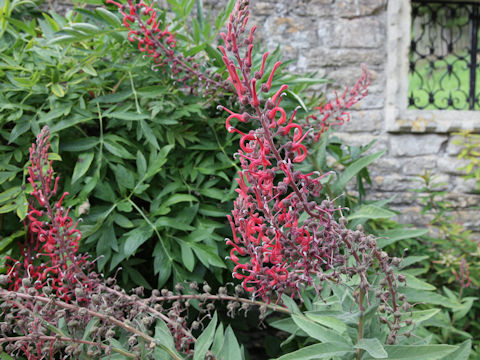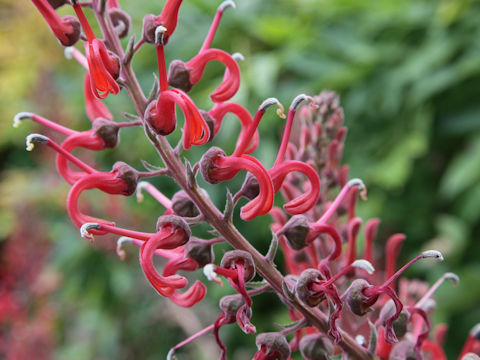|
|
|
|
[Index]
[Back] |
  |
|
|
|
ìkAJå¤AJi_Ìì©çAJÌ©çì¼A»êÉLVRâAJARrAkª´YÅ·B¼Á½êAÍÈ»êɼnÈÇɶ¦A³ÍVOZ`ÙÇÉÈèÜ·BtÍâj`©ç`ÅAª èÜ·BÔÍÓ¤Nâ©ÈÔFÅ[TôµA¼aSZ`ÙÇAÄ©çHÉ^Á¼®ÈóÔÉç«Ü·B |
|
|
LLEÈ~]JNV®Ì½NÅAw¼Í Lobelia cardinalisBp¼Í Cardinal flowerB |
|
|
The Cardinal flower (Lobelia cardinalis) belongs to Campanulaceae (the Bellflower family). It is a perennial herb that is native to the Americas; from southeastern Canada south through the eastern and southwestern United States, Mexico and Central America to northern Colombia. This herb grows in wet places, streambanks, and swamps, and up to a height of about 70 cm. The leaves are lanceolate to ovate, with a toothed margin. The flowers are usually vibrant red, deeply five-lobed, up to 4 cm across, and bloom in an erect raceme during the summer to fall. |
|
|
CMXEEBgV[BEFXgx[ÉÄA2011N0825úBeB(photo by Jon Suehiro) |
|
|
|
Shu Suehiro |